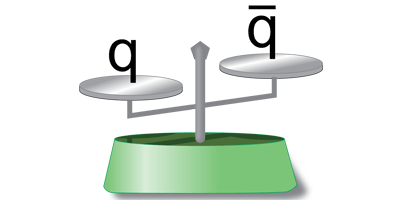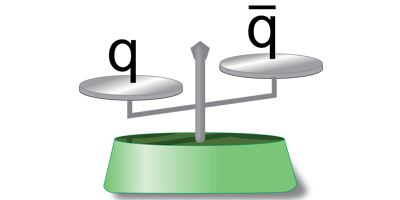Tipping the Balance
Were physics nice and symmetric, we might not be here: a universe in which the big bang created equal parts matter and antimatter could have simply annihilated itself. Things seem to be mostly matter, however, an imbalance that requires, among other things, a breaking of CP (charge-parity) symmetry at primordial high temperatures. All the bits and pieces of a proper understanding of this asymmetry appear to be present in the standard model of particle physics, but the problem is the lack of a specific physical mechanism that yields the correct value for the abundance of matter versus antimatter.
As they explain in a paper in Physical Review Letters, Tomáš Brauner at the University of Bielefeld, Germany, and colleagues propose that an asymmetry in the number of baryons may in fact be generated at lower than expected temperatures. Previous calculations suggested that CP violation within the standard model could not be a factor at the extremely high energies found in the initial moments after the big bang and so this CP effect has conventionally been neglected. Based on their calculations of a quantity called the effective bosonic action, which captures the creation and annihilation of the building blocks of matter, the authors argue otherwise. In their calculations of the detailed temperature dependence of CP violation, Brauner et al. show that the CP symmetry breaking is much stronger at lower temperatures (below giga-electron-volt) than at temperatures where electroweak symmetry breaking occurs (around giga-electron-volts). The authors hope that this finding of a strong low-temperature effect may invite a new look at scenarios for “cold” baryon generation and a fresh approach to understanding matter/antimatter asymmetry. – David Voss





